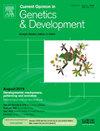Totipotency or plenipotency: rethinking stem cell bipotentiality
IF 3.7
2区 生物学
Q2 CELL BIOLOGY
引用次数: 0
Abstract
The term ‘totipotency’ has often been misapplied in stem cell research to describe cells with embryonic and extraembryonic bipotentiality, despite a lack of evidence that they can generate an entire organism from a single cell. Additionally, no specific term currently distinguishes bipotential stem cells from pluripotent cells, which contribute poorly to extraembryonic tissues. This review examines the developmental continuum from totipotency to pluripotency in early embryos and revisits the previously proposed concept of plenipotency in preimplantation development. We evaluate emerging stem cell models that exhibit bipotentiality but have lost the ability to autonomously initiate and sustain the sequential fate decisions necessary to develop into a complete organism. Unlike totipotent embryonic cells, which retain the information required to initiate fate decisions at the correct timing and cell numbers, these stem cells have lost that capacity. This loss of critical developmental information distinguishes totipotency from plenipotency, with bipotential stem cells aligning more closely with the latter. By distinguishing plenipotency from totipotency and pluripotency, we aim to refine terminology, enhance our understanding of early embryonic development, and address ethical considerations in human research.
全能性或全能性:重新思考干细胞的双潜能性
在干细胞研究中,“全能性”一词经常被误用来描述具有胚胎和胚胎外双潜能的细胞,尽管缺乏证据表明它们可以从单个细胞产生整个生物体。此外,目前还没有专门的术语来区分双潜能干细胞和多能细胞,后者对胚胎外组织的贡献很小。本文回顾了早期胚胎从全能性到多能性的发育过程,并回顾了以前提出的胚胎着床前发育的全能性概念。我们评估了新兴的干细胞模型,它们表现出双潜能,但失去了自主启动和维持发展成完整生物体所必需的顺序命运决定的能力。与保留在正确时间和细胞数量启动命运决定所需信息的全能胚胎细胞不同,这些干细胞已经失去了这种能力。这种关键发育信息的缺失将全能性与全能性区分开来,双潜能干细胞与后者更接近。通过区分全能性、全能性和多能性,我们的目标是完善术语,增强我们对早期胚胎发育的理解,并解决人类研究中的伦理问题。
本文章由计算机程序翻译,如有差异,请以英文原文为准。
求助全文
约1分钟内获得全文
求助全文
来源期刊
CiteScore
7.90
自引率
0.00%
发文量
102
审稿时长
1 months
期刊介绍:
Current Opinion in Genetics and Development aims to stimulate scientifically grounded, interdisciplinary, multi-scale debate and exchange of ideas. It contains polished, concise and timely reviews and opinions, with particular emphasis on those articles published in the past two years. In addition to describing recent trends, the authors are encouraged to give their subjective opinion of the topics discussed.
In Current Opinion in Genetics and Development we help the reader by providing in a systematic manner:
1. The views of experts on current advances in their field in a clear and readable form.
2. Evaluations of the most interesting papers, annotated by experts, from the great wealth of original publications.[...]
The subject of Genetics and Development is divided into six themed sections, each of which is reviewed once a year:
• Cancer Genomics
• Genome Architecture and Expression
• Molecular and genetic basis of disease
• Developmental mechanisms, patterning and evolution
• Cell reprogramming, regeneration and repair
• Genetics of Human Origin / Evolutionary genetics (alternate years)

 求助内容:
求助内容: 应助结果提醒方式:
应助结果提醒方式:


